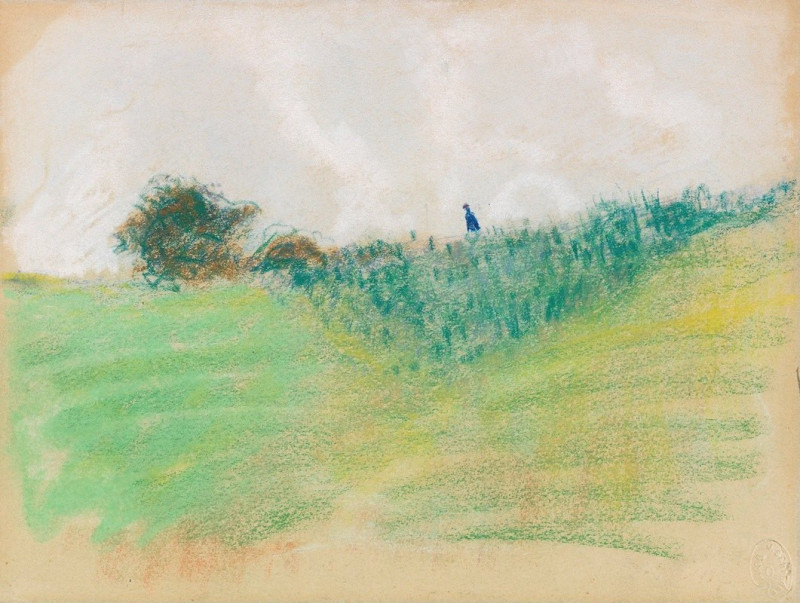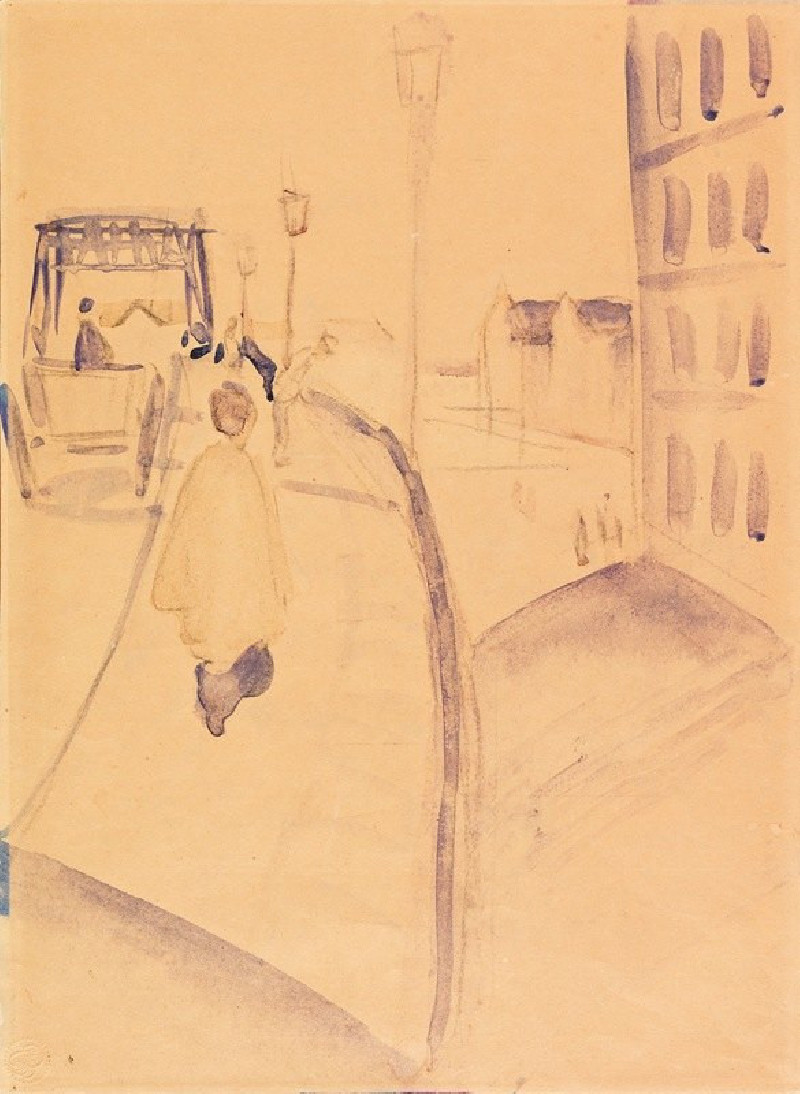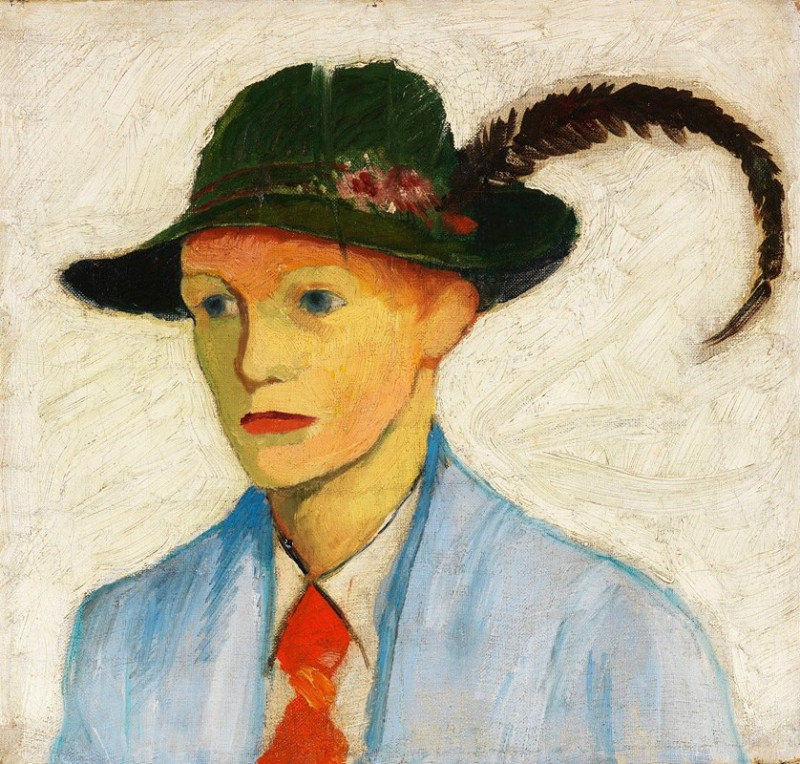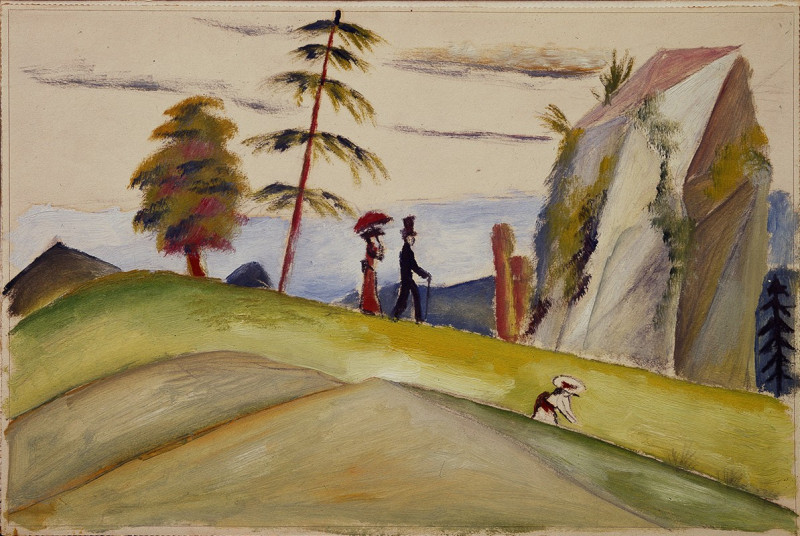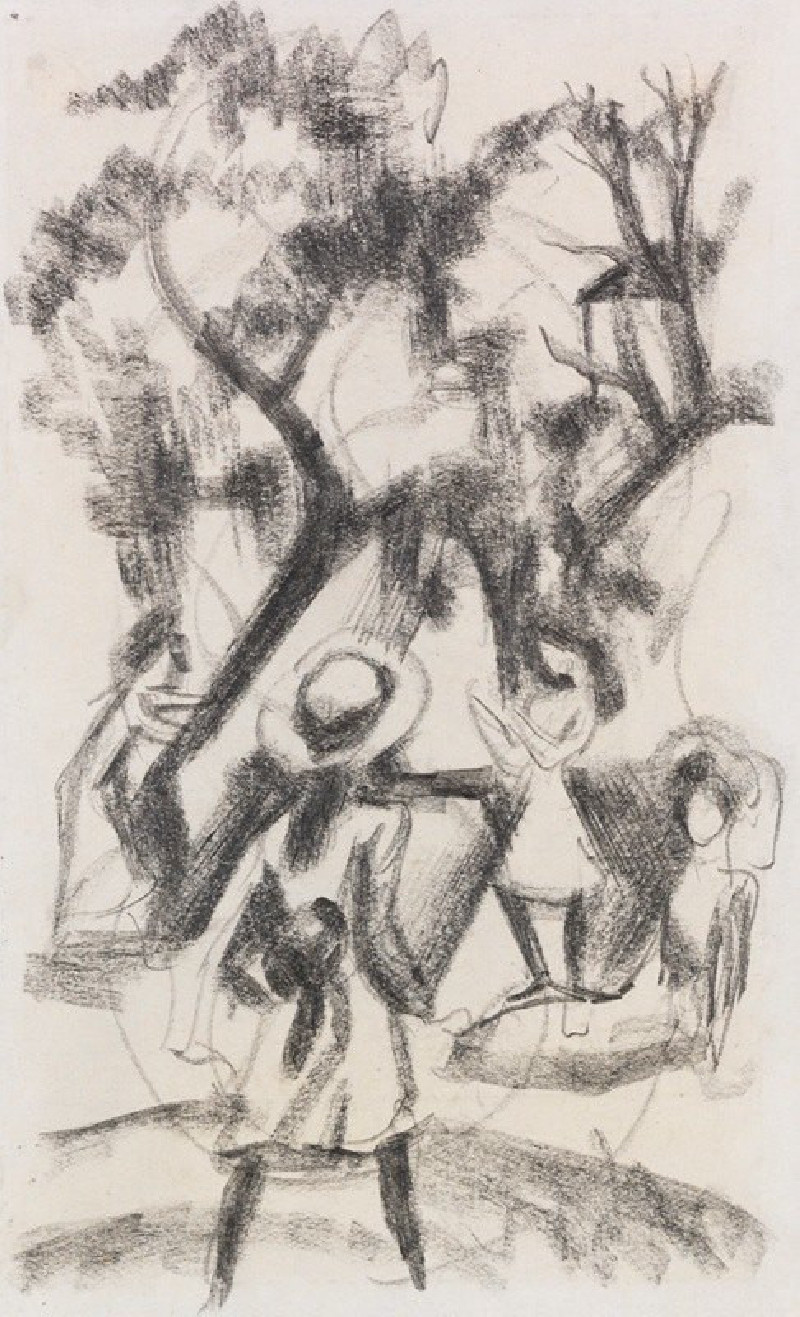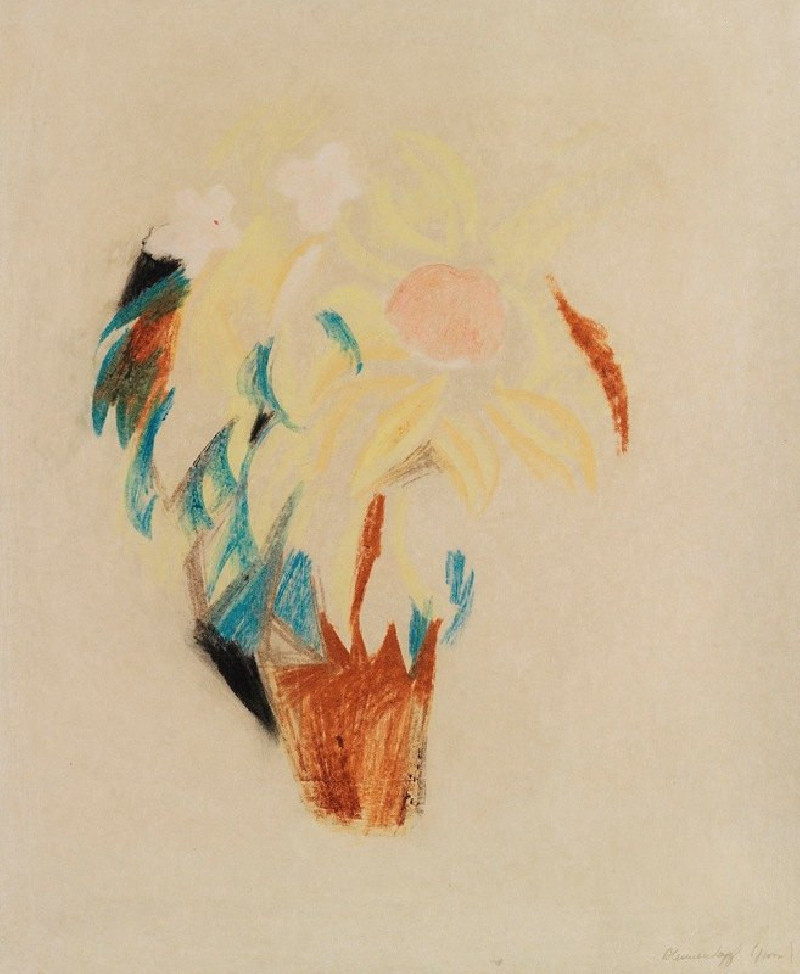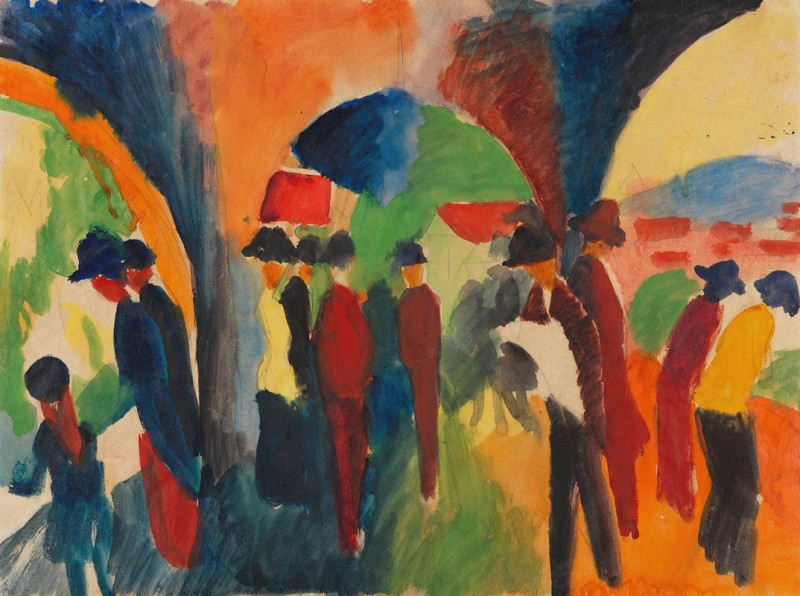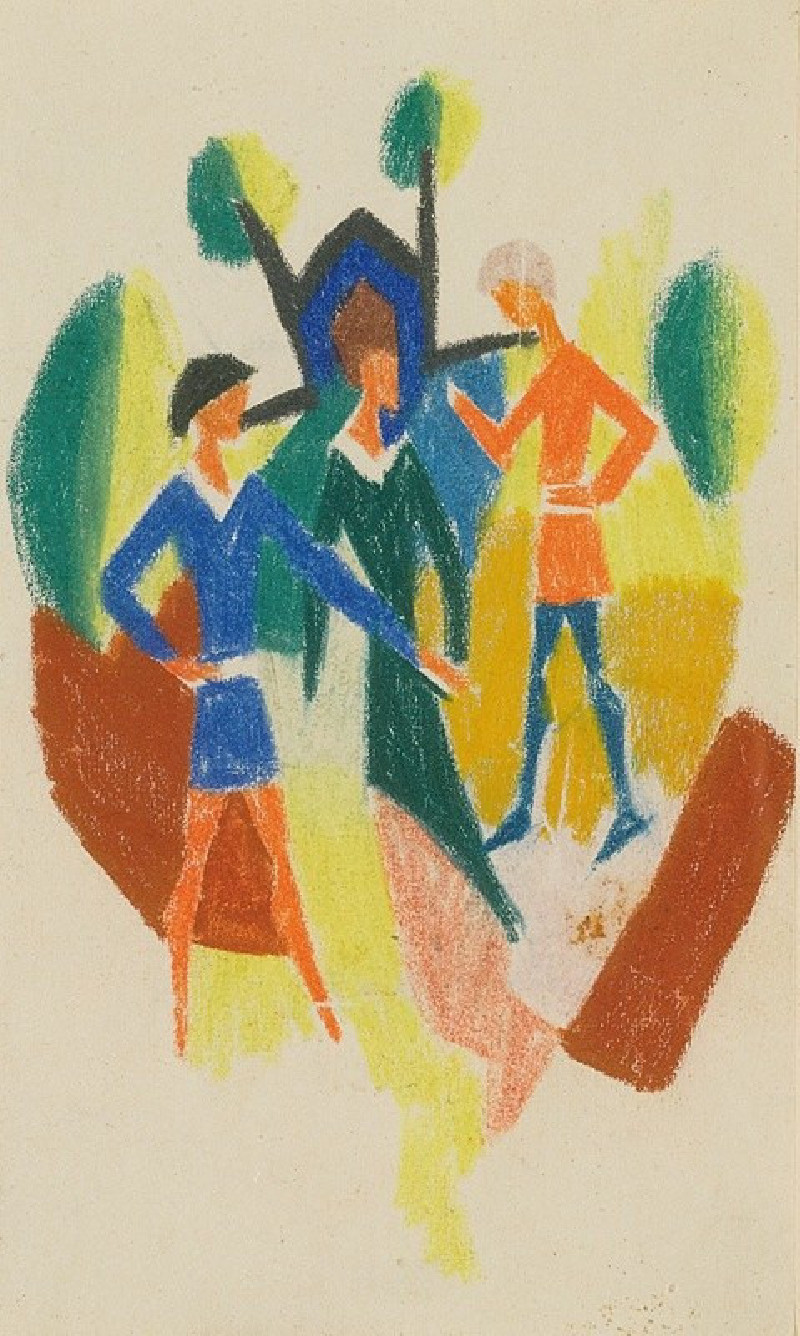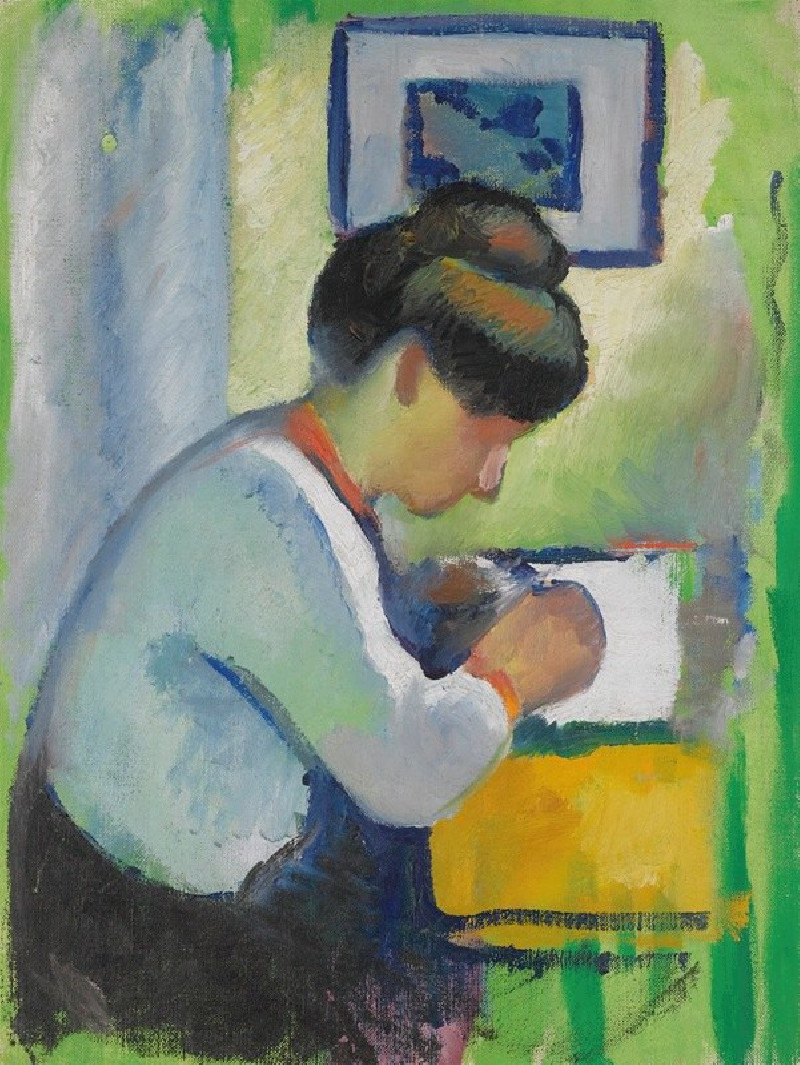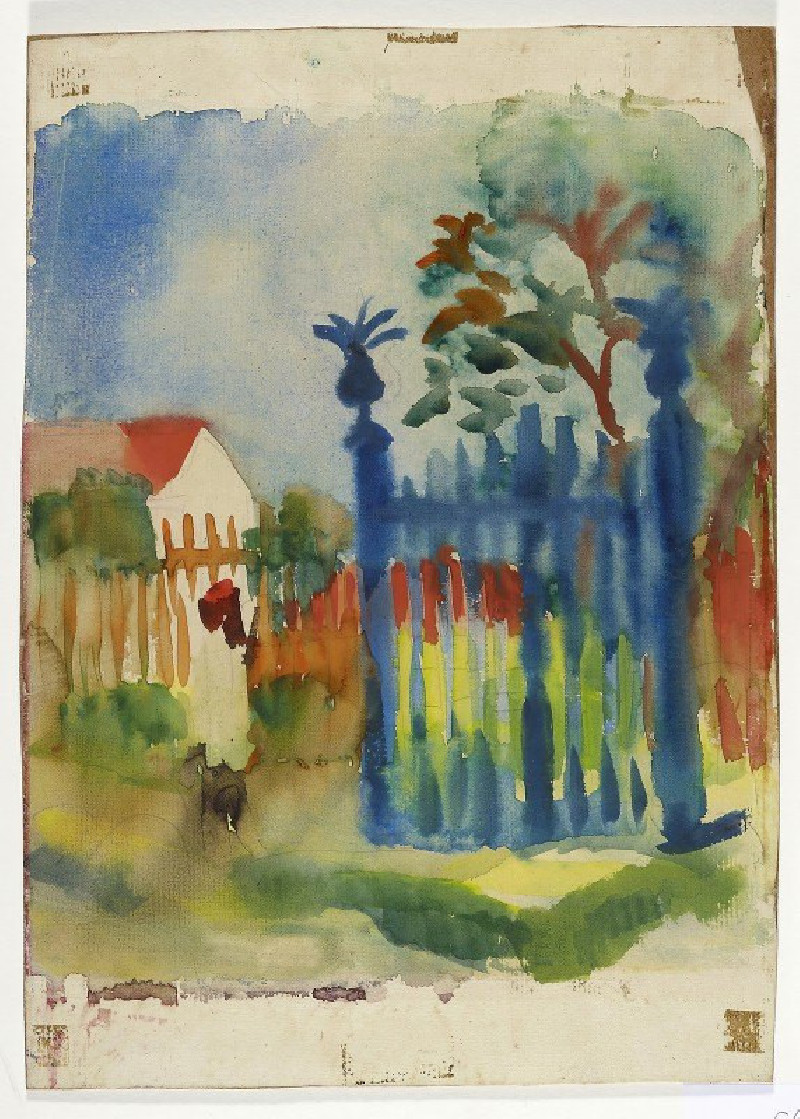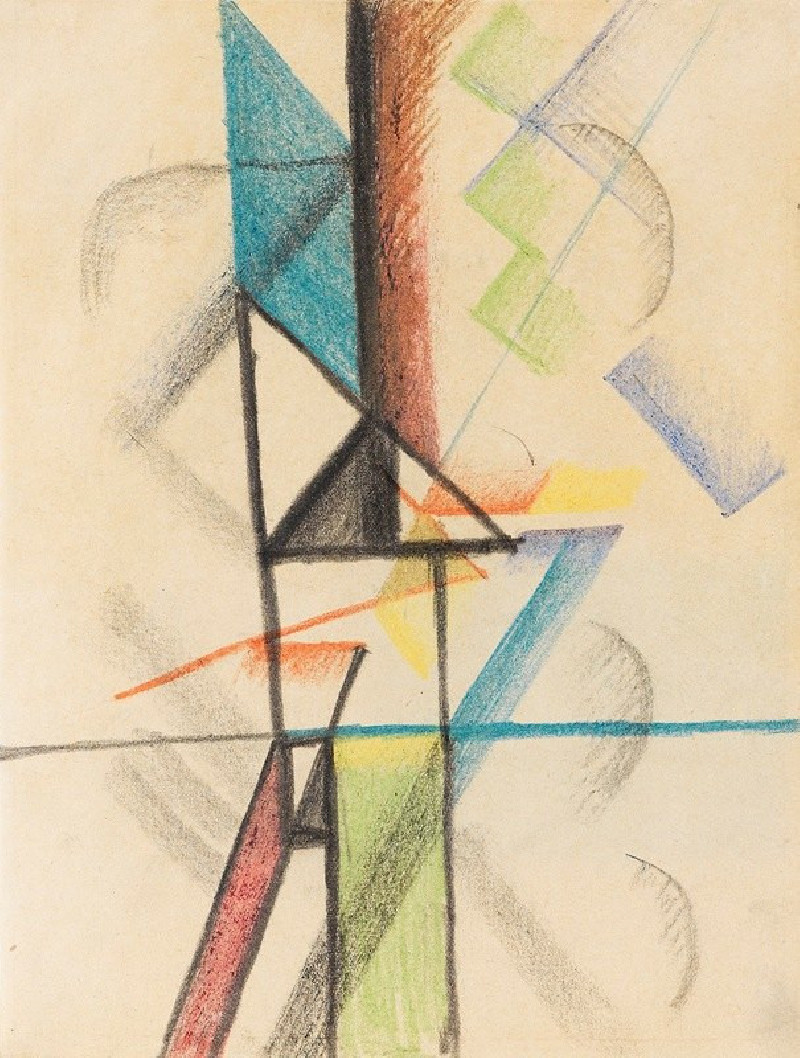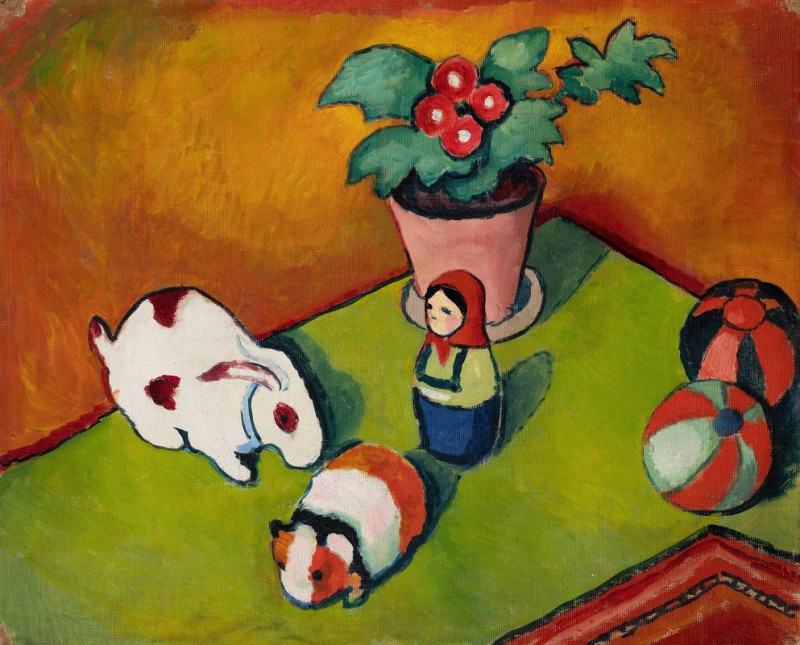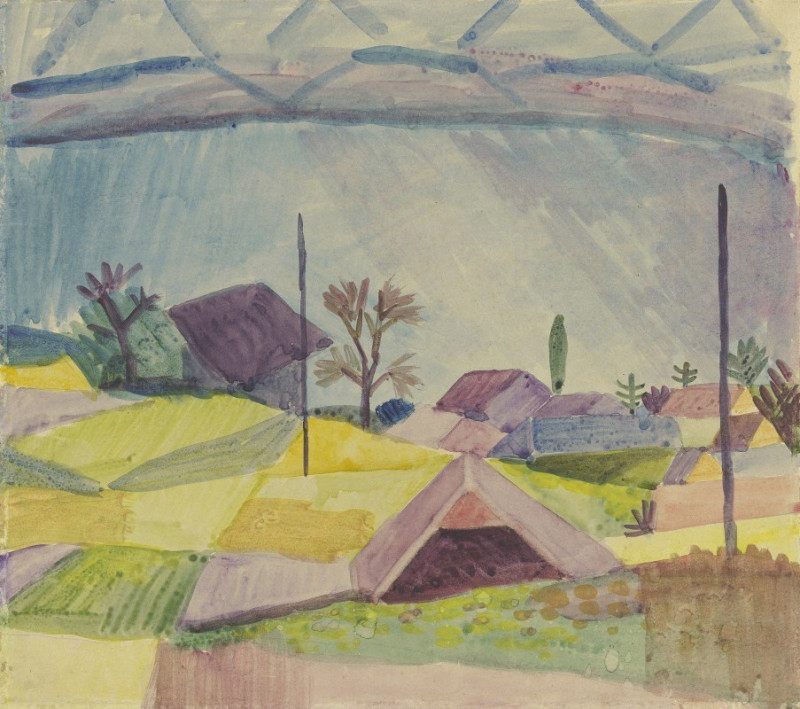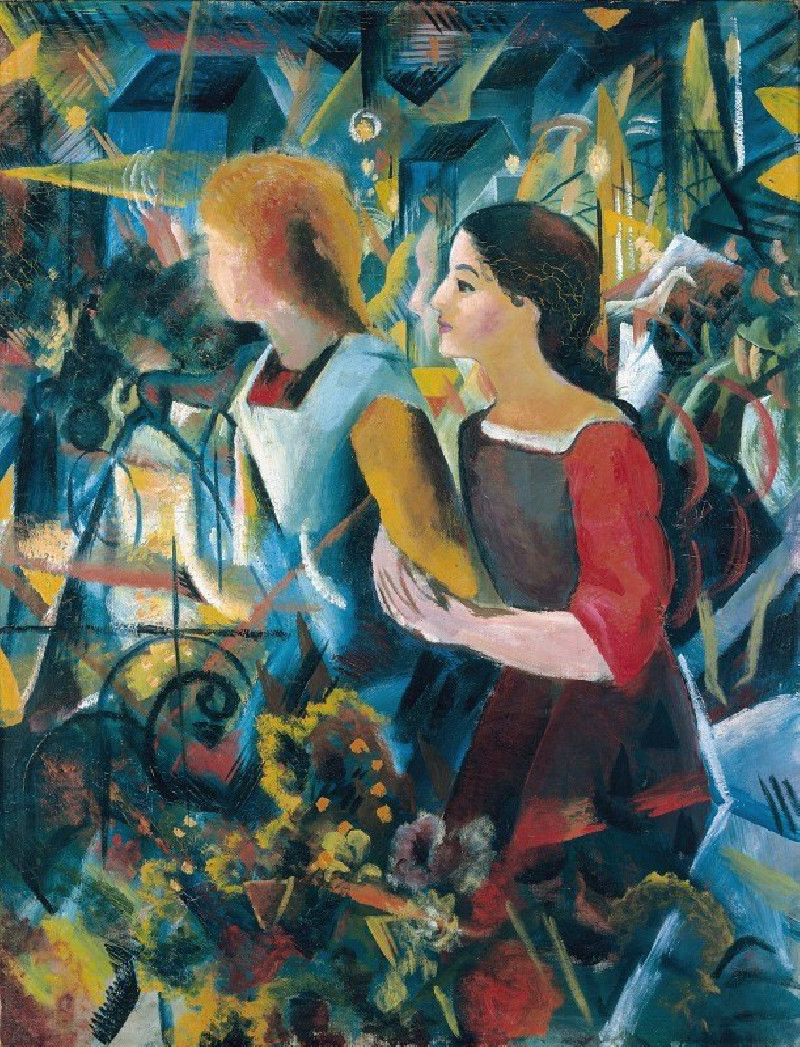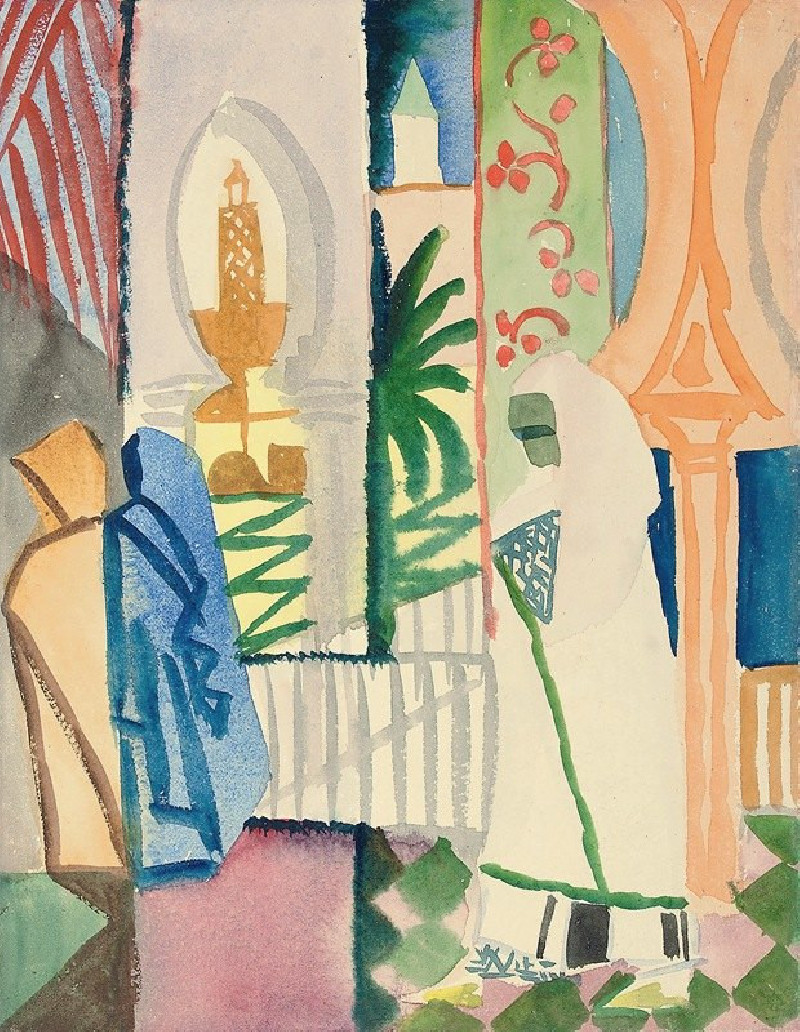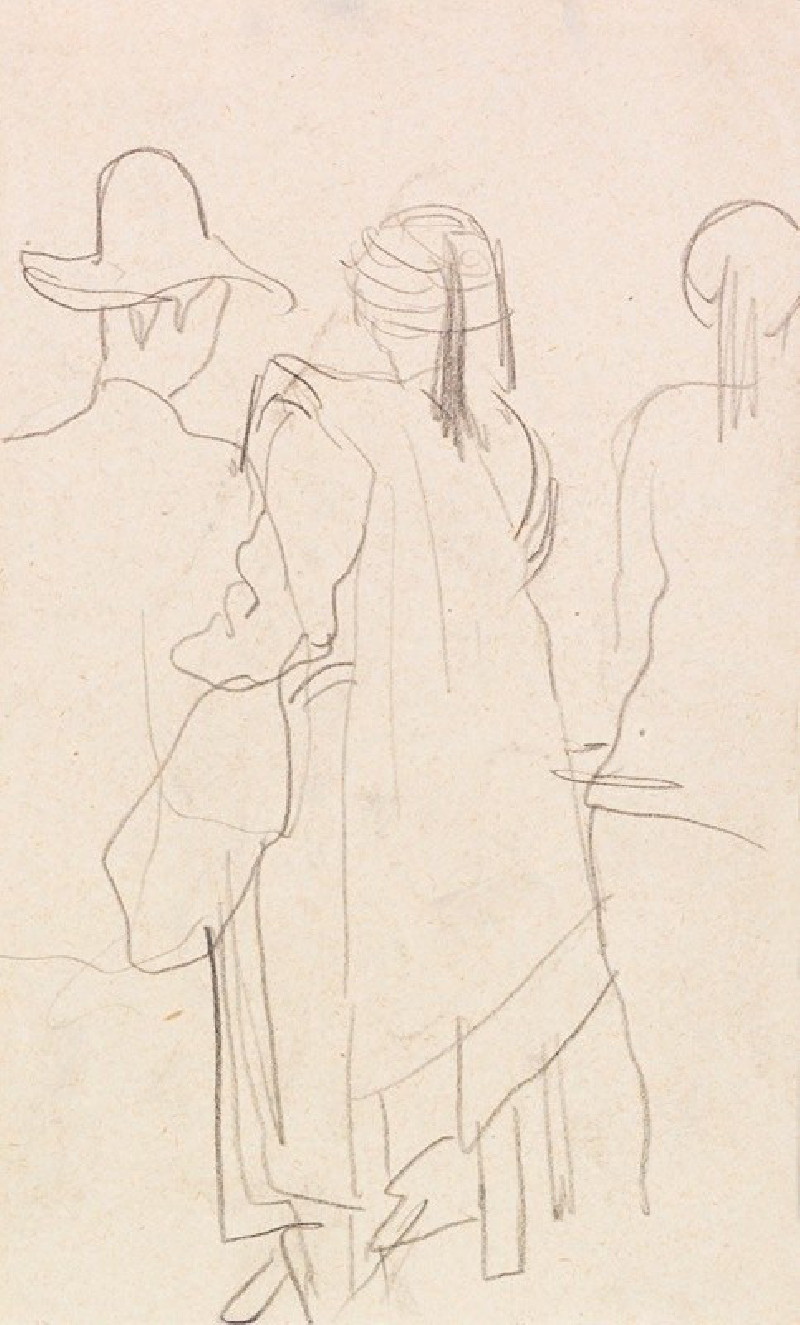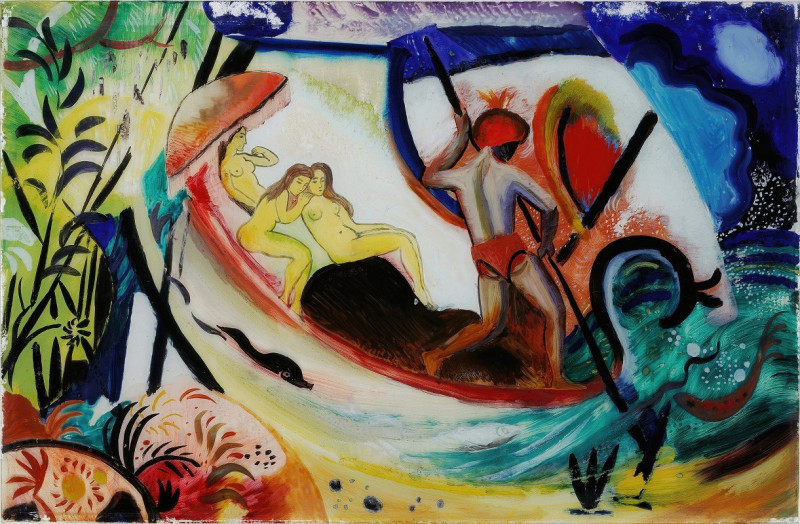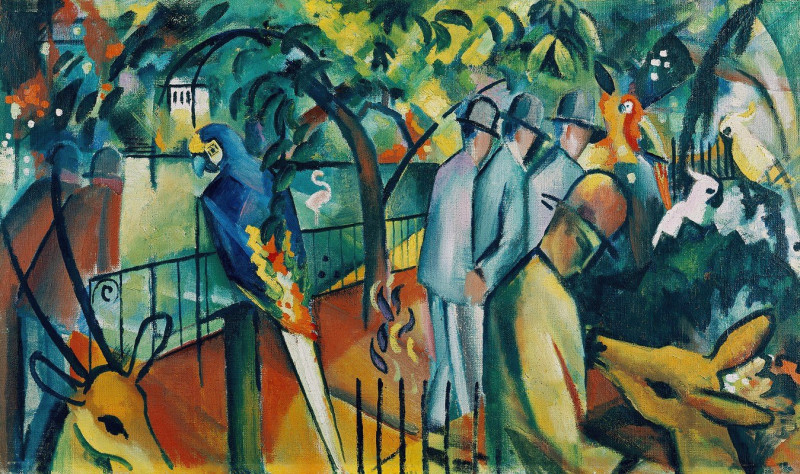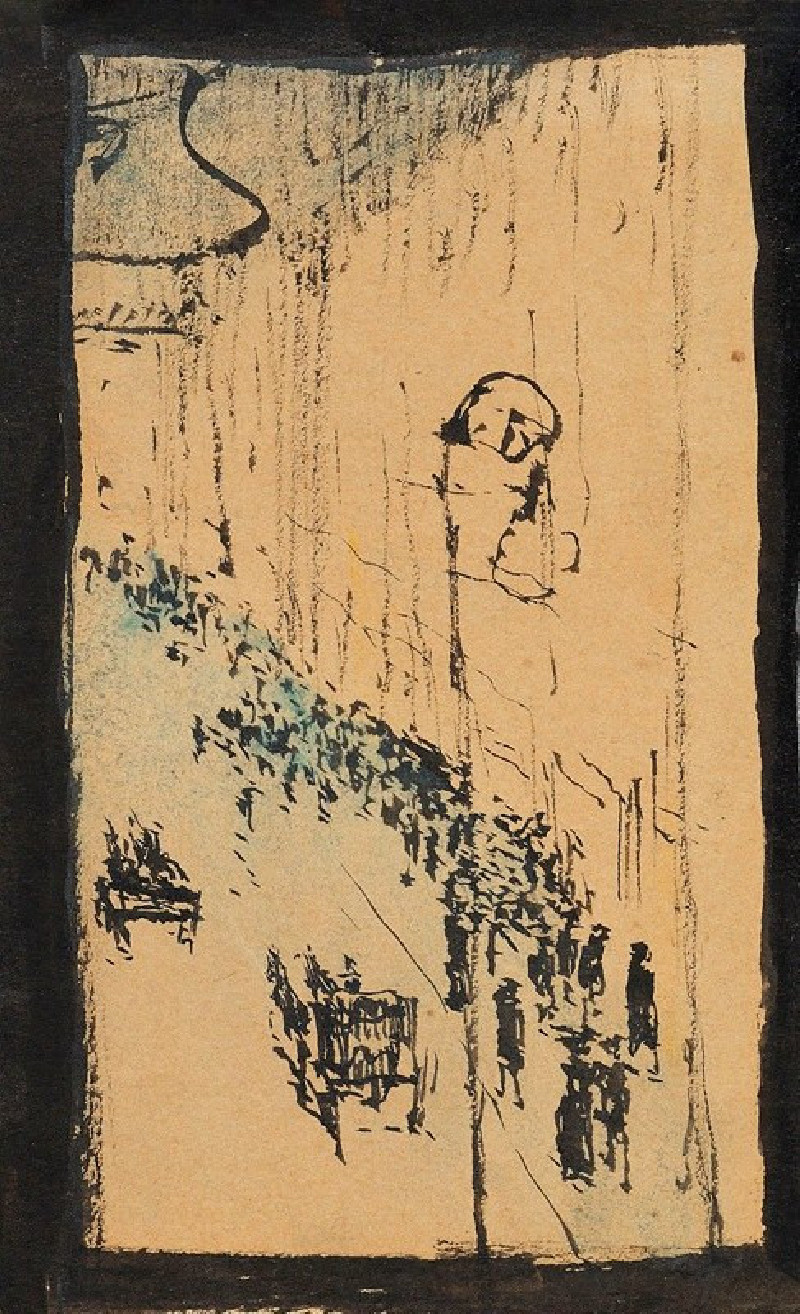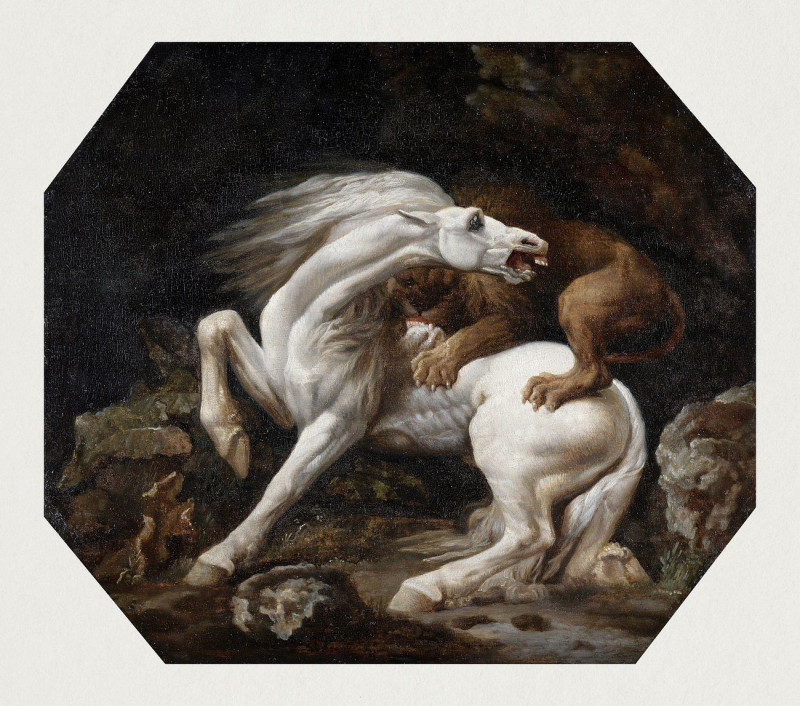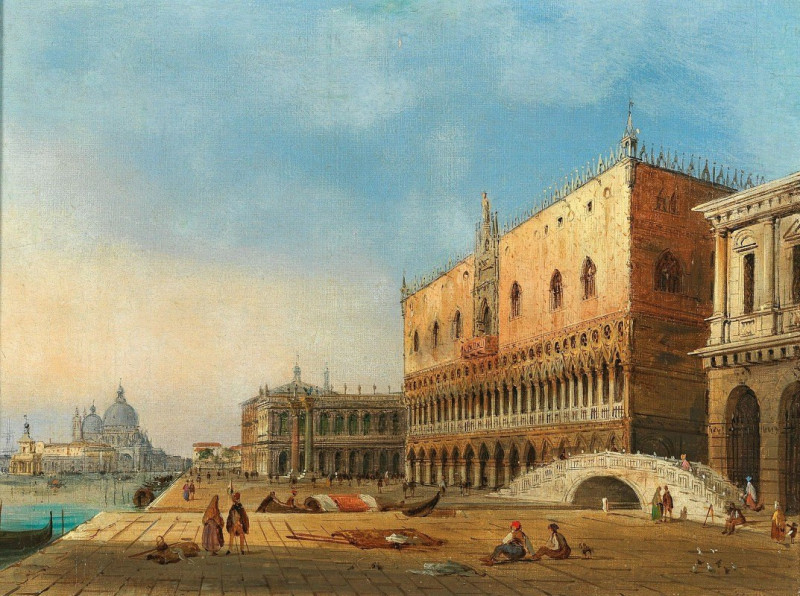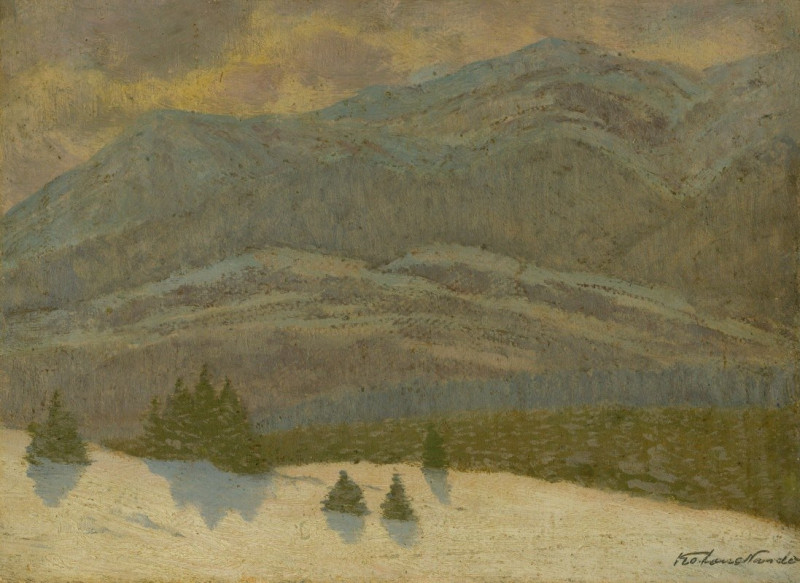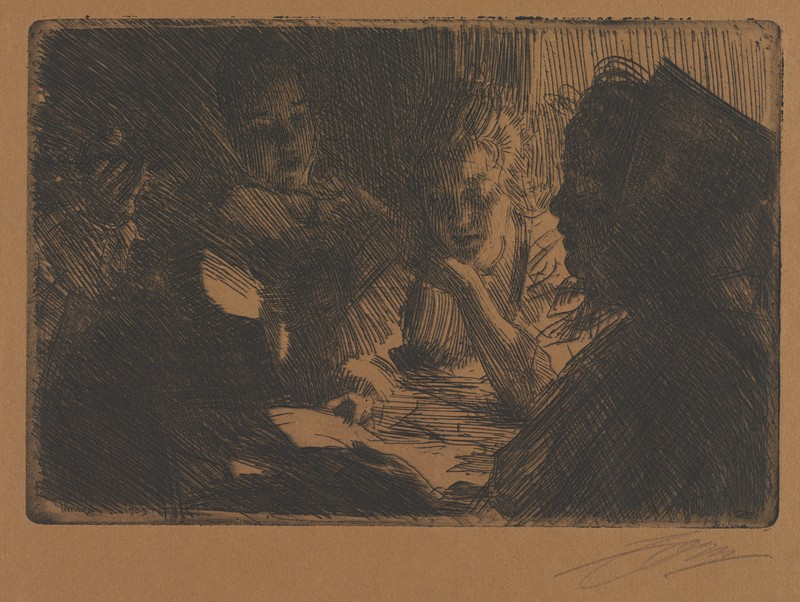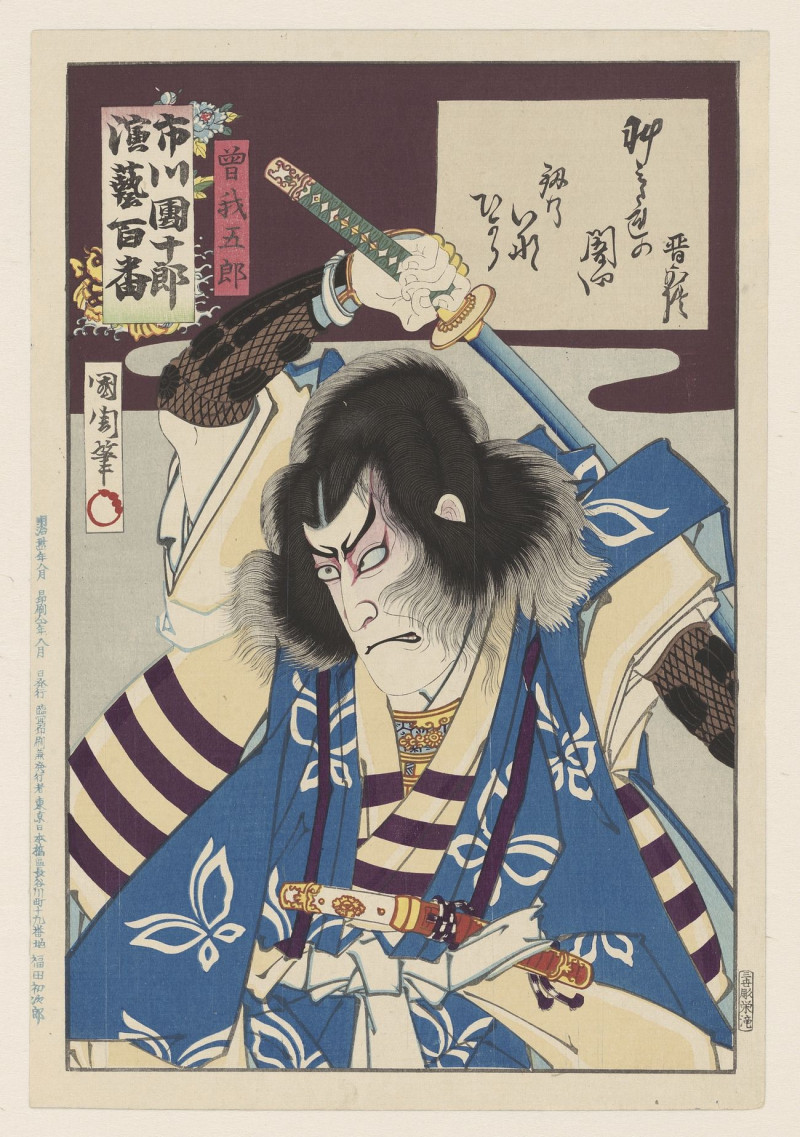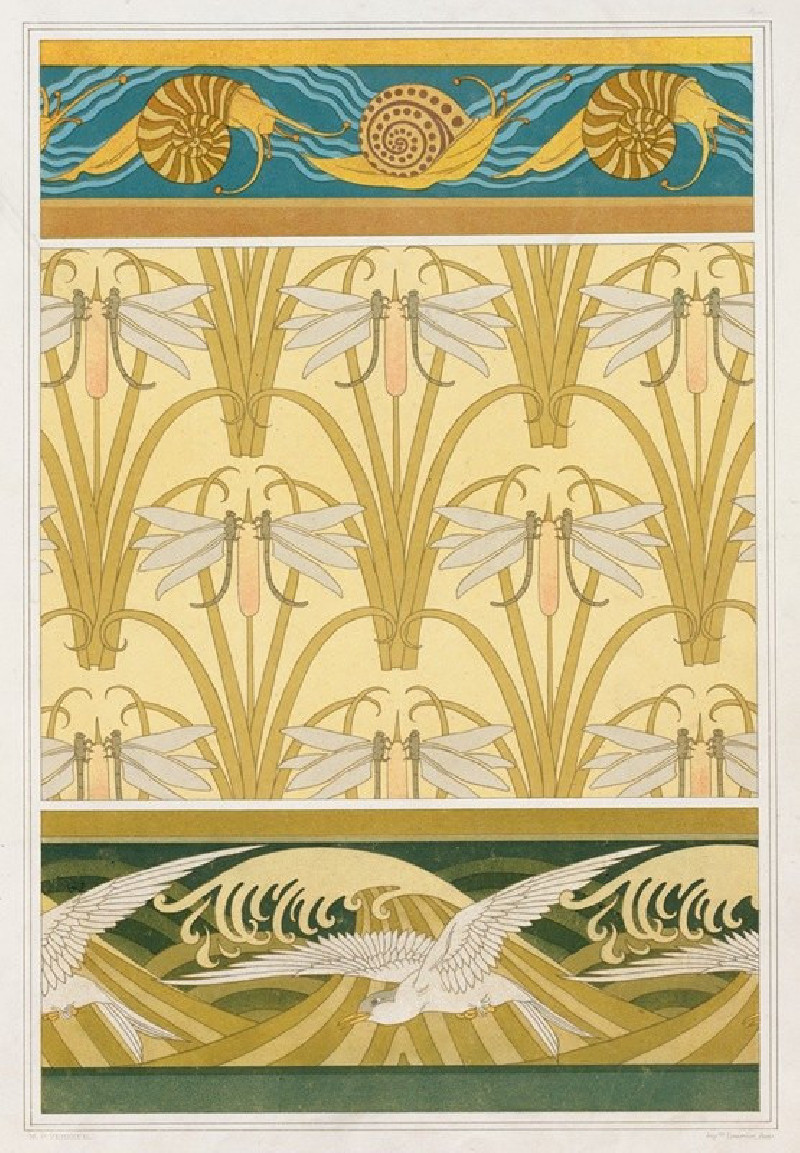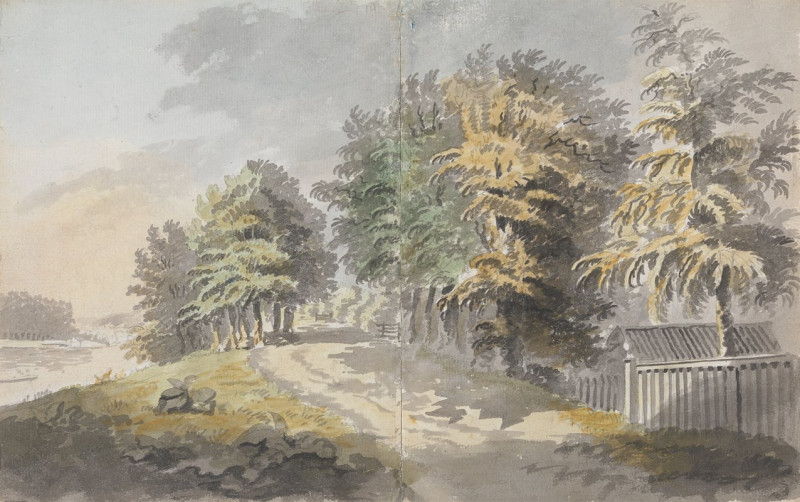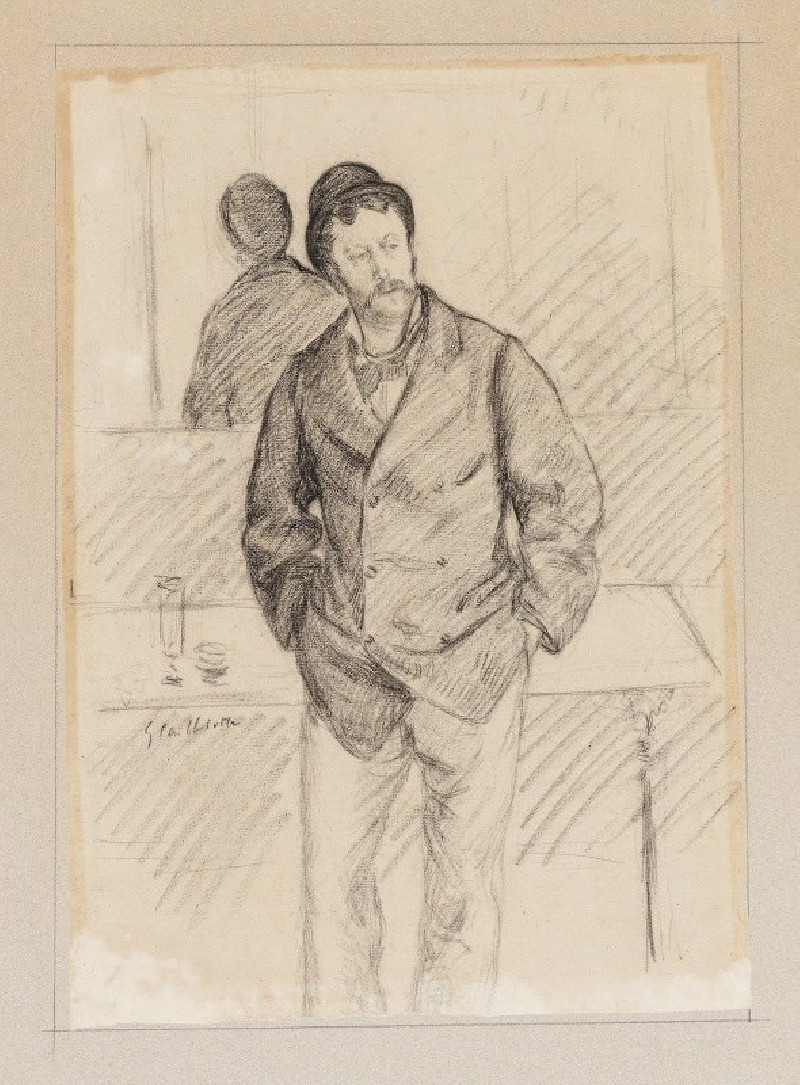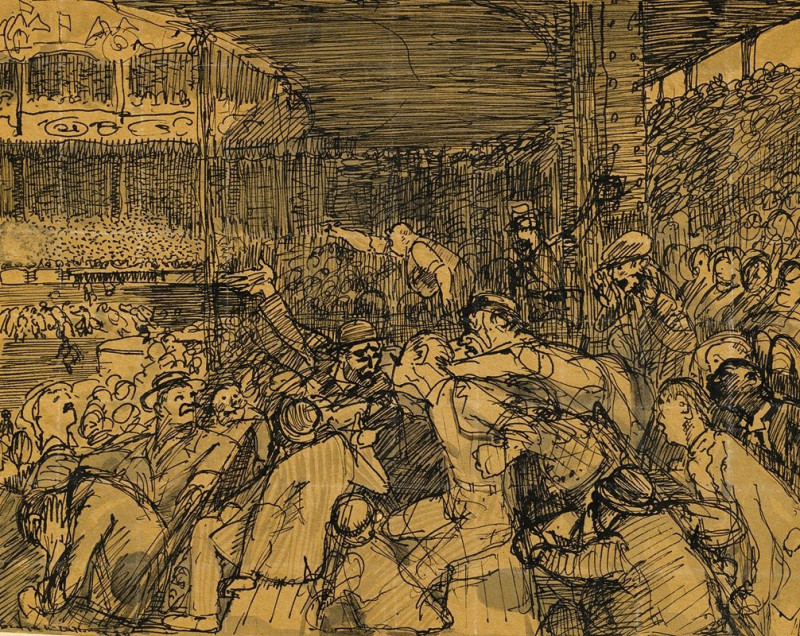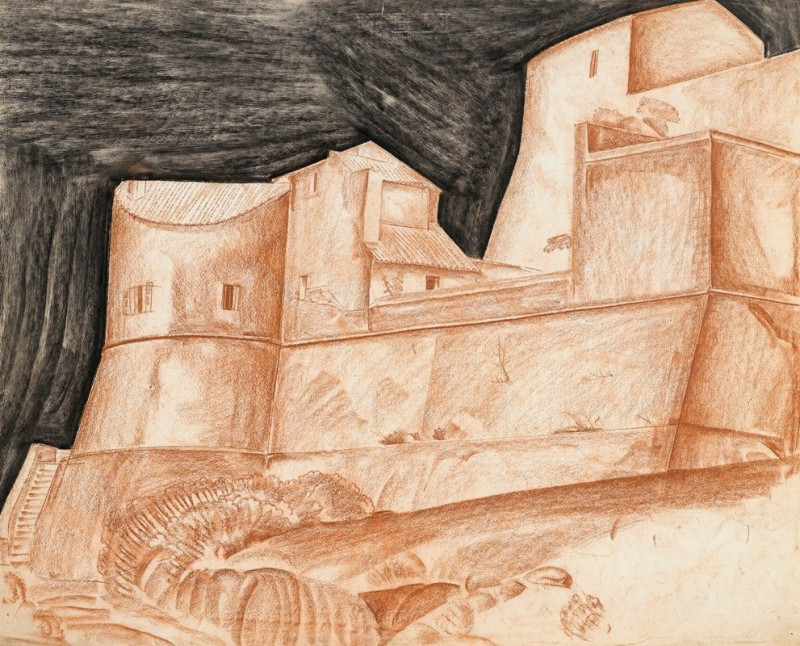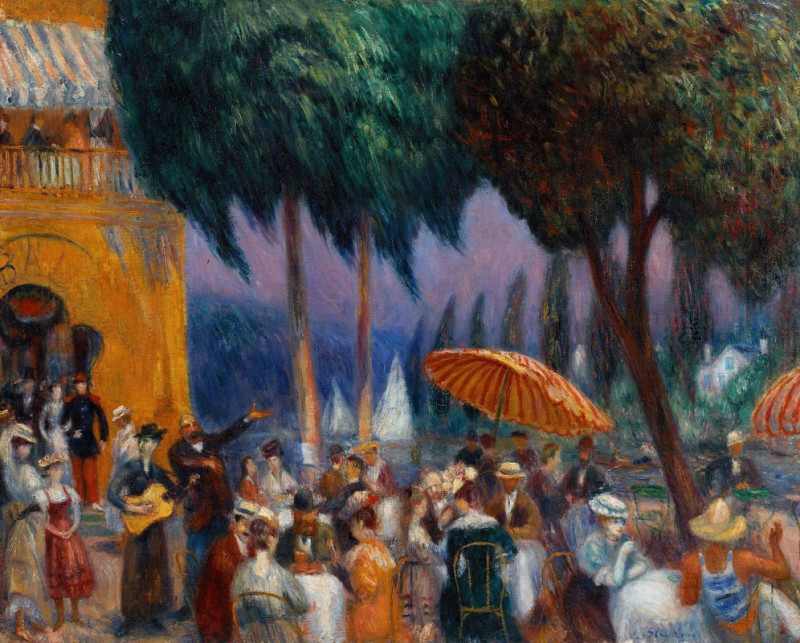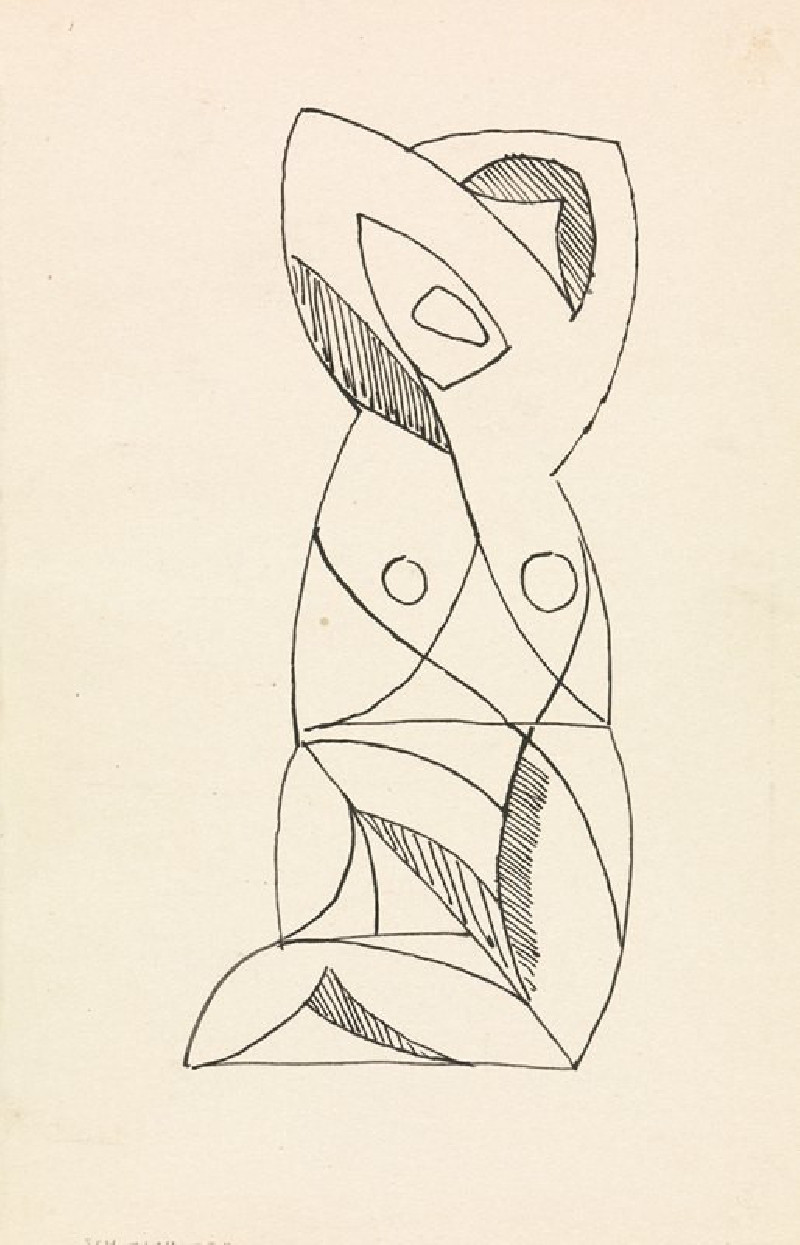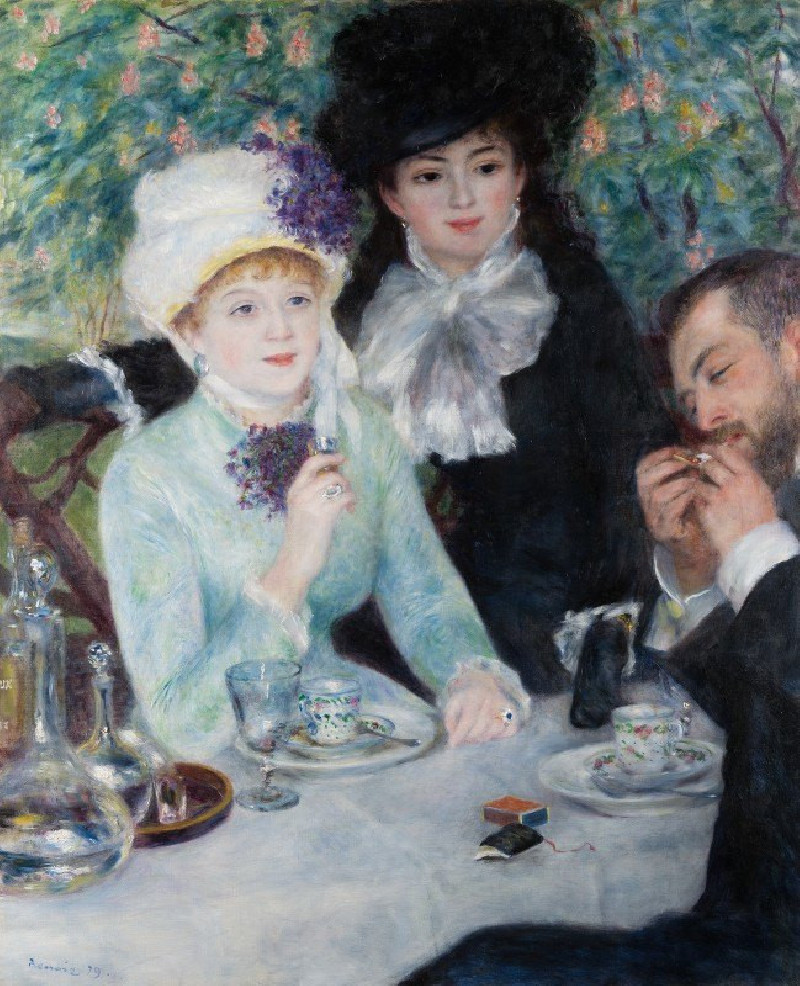Abstrakte Formen II (1913)
Technique: Giclée quality print
Recommended by our customers
More about this artwork
Welcome to this exploration of "Abstrakte Formen II" by August Macke, a notable piece from the year 1913 that exemplifies the unique strength and innovation of early abstract art. In this work, Macke ventures away from the representational to embrace the enigmatic allure of abstraction.Upon viewing, the canvas immediately draws the eye with its cacophony of interlocking shapes and lines. Macke skillfully overlays triangles, rectangles, and curves in a harmonious yet dynamic composition. The use of subtle shading in conjunction with bold outlines creates a pulsating effect, suggesting both depth and movement within the two-dimensional space.Colors in "Abstrakte Formen II" also play a vital role. Macke confines his palette to cool tones—blues and grays—accented with punctuations of warmer oranges and reds. This choice imbues the painting with a sense of balance and tension, inviting the viewer to dissect the various elements that intersect and overlap throughout the frame.While abstract, the painting might remind one of urban landscapes or architectural forms seen through a fractured lens, which speaks to Macke's interest in the modern world and the new visual languages emerging during his time.
Delivery
Returns
August Macke (3 January 1887 – 26 September 1914) was a German Expressionist painter. He was one of the leading members of the German Expressionist group Der Blaue Reiter (The Blue Rider). He lived during a particularly innovative time for German art: he saw the development of the main German Expressionist movements as well as the arrival of the successive avant-garde movements which were forming in the rest of Europe. Like a true artist of his time, Macke knew how to integrate into his painting the elements of the avant-garde which most interested him.


